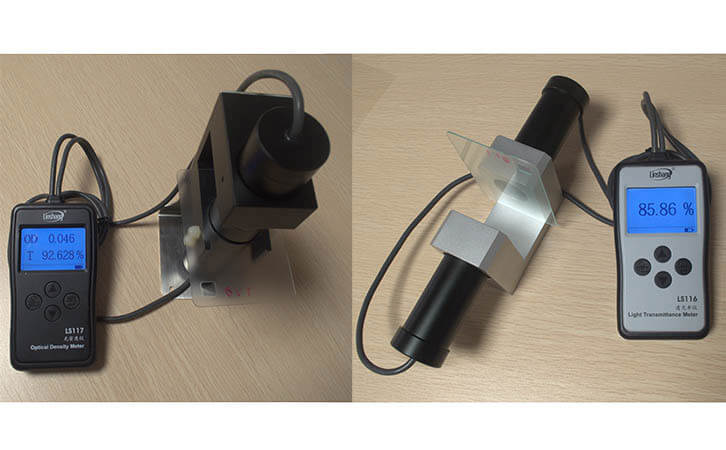Glass Transmittance
When light irradiates on the glass surface, it exhibits three properties: transmission, reflection and absorption.
Transmission: Also called transmittance of visible light. It means the light that passes through a substance. When the light irradiate on the transparent materials, the visible light is transmitted easily and objects are seen clearly. When the light irradiates on the translucent materials, some visible light is transmitted, but some is scattered.
Reflection: When the light reflects off the object surface, the angle of incidence equals to the angle of reflection.
Absorption: After the light passes through the glass, a part of the light energy is lost and transferred into heat energy.
1. What is glass transmittance?
Definition of light transmittance: the percentage of luminous flux transmitted through a transparent or translucent body and its incident luminous flux, nature: reflectivity of glass + absorption + transmittance = 100%. Light transmittance of ordinary lighting glass is slightly higher on average 80%. Heat-reflecting glass for shading and heat insulation, which requires high reflectivity; heat-absorbing glass for heat insulation and anti-glare effects, which requires not only to absorb a large amount of infrared radiation energy, but also to maintain good transmittance. The light transmittance of glass is usually tested with Linshang LS116 light transmittance meter. LS116 transmittance meter use 380nm-760nm light source, in line with CIE photopic luminosity function. High transmittance materials (up to 99.8%) can be measured.

2. Analysis of light transmission loss
When light passes through any medium, its light transmittance (T), reflectance (R) and absorption rate (A) have the following relationship according to the law of conservation of energy. Next, we will introduce the relationship between these three factors in details.
(1) Reflectivity
The reflectivity increases with the increase of the incident angle. But when the incident angle is less than 40 degrees, the reflectance does not change significantly with the incident angle. When the incident angle is greater than 70, the reflectivity increases sharply as the incident angle. The reflectance also increases as the difference in refractive index between the two media increases. For the interface between glass and air, the refractive index of air, the refractive index of glass and the refractive index are fixed, so the main factor affecting reflection is the incident angle.
(2) Light absorption loss
Generally, the darker the color, the smaller the transparency coefficient. In order to reduce the light absorption loss of the glass, the lighter color glass can be used. In addition, the transmission loss of the glass decreases exponentially with the glass thickness. It can be seen that the smaller the thickness, the smaller the light transmission loss.
(3) Scattering loss
The scattering loss of glass mainly occurs in the composite glass. Because there are some particles inside the glass that can change the direction of the light, part of the light cannot be imaged and loses its function. The scattering loss of light depends on the size of the scattering point. When the size of the scattering point is the same order as the wavelength of the incident light wave, the scattering of light is maximum. When the diameter of the particle is about 1/2 of the wavelength of the incident light, the scattering reaches the maximum.
For organic materials, when there are particles inside, observe the object through the glass. Because the object and the light source are on the same side, the presence of forward light scattering will cause surface fog. The surface fog will cause a loss of contrast, which affects the clarity of observation through the glass.
(4) Other factors affecting the light transmittance
Different surface finish of the glass screen has a small effect on the light transmittance. The same part of the same glass screen has the same part from the surface of the hand. The measured light transmittance can sometimes differ by more than 1%. Different glass screens are different. The finish should mainly affect the reflectivity. Impurities in the glass raw material will also affect the transmittance, such as iron oxide, this should be because the absorption rate is affected.
- Linshang Insulated Glass Unit Measuring Tools
- Spectacle lens anti-blue light detection---blue-violet light transmittance meter
- Measurement of Optical Density
- Difference of LS116 Transmission & LS117 OD Meter
- Difference between LS116 and LS117 Light Transmittance Meter
- What’s the Difference Between Point Light and Parallel Light Transmittance Meter